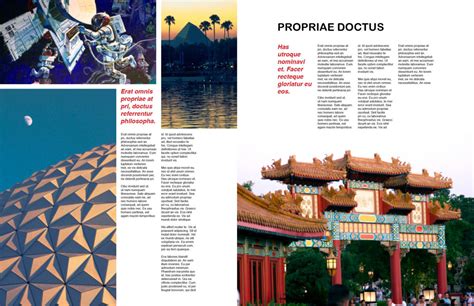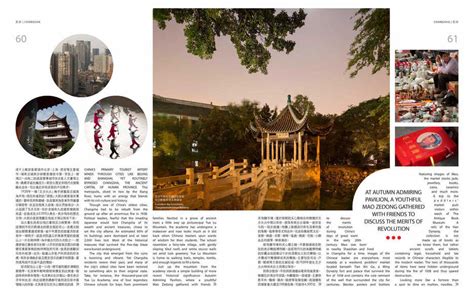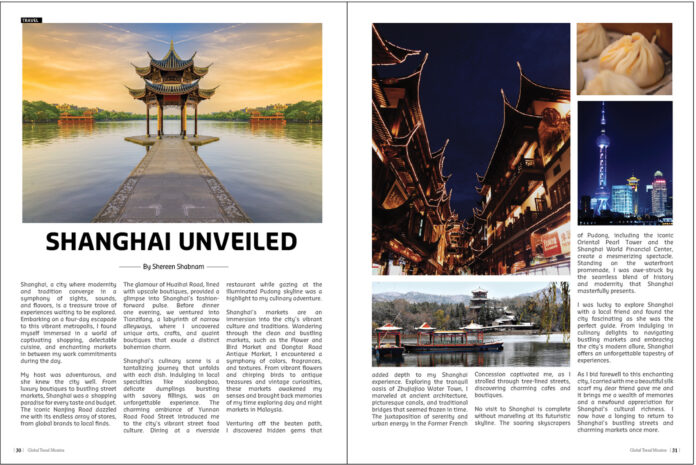Urban boutiques offer a unique blend of local culture, creativity, and charm that distinguishes them from mainstream retail stores. These small, often independently owned shops, reflect the essence of the cities they inhabit, showcasing products that celebrate local artisanship, distinctive design, and individuality. From their historical roots to their modern-day incarnations, urban boutiques have evolved as hubs of creativity, offering customers a more personalized and immersive shopping experience. As they continue to shape urban landscapes worldwide, they not only support local economies but also champion sustainability and ethical business practices. This article explores the rich history, architectural appeal, cultural influences, and future trends shaping the global world of urban boutiques.
Investigate this topic thoroughly with ritarblog.com
1. Introduction to Urban Boutiques
Urban boutiques are small, specialized shops located in bustling city environments, offering a curated selection of products that often reflect local culture, creativity, and artistry. Unlike large retail chains, these boutiques emphasize individuality and craftsmanship, often showcasing unique, handmade goods and limited-edition items that resonate with the character of the surrounding community. They cater to a clientele seeking more than just a transaction—offering a shopping experience that is personal, intimate, and rooted in the local identity of the city.
These boutiques are more than just retail spaces; they represent the fusion of fashion, art, and design, providing a platform for local artisans and entrepreneurs to showcase their creativity. By embracing sustainable practices and promoting local craftsmanship, urban boutiques contribute to the cultural fabric of cities, shaping shopping trends and influencing urban lifestyles. Their appeal lies in their ability to combine exclusivity with a deep sense of place, offering customers a distinct alternative to the uniformity of global retail brands.

2. Historical Evolution and Origins
The origins of urban boutiques trace back to the small, family-owned shops that flourished in city centers during the late 19th and early 20th centuries. These early boutiques catered to the unique tastes of urban dwellers, offering handcrafted goods, tailor-made clothing, and personalized services. As cities expanded, these small stores became essential parts of the urban fabric, reflecting the character and cultural diversity of their neighborhoods.
In the mid-20th century, urban boutiques began evolving as cultural hubs, embracing avant-garde fashion, art, and design. These spaces provided emerging designers and artisans an opportunity to display their creativity, often serving as incubators for local talent. With the rise of mass production and global retail chains, urban boutiques retained their relevance by emphasizing exclusivity, craftsmanship, and personalized customer experiences.
Today, urban boutiques continue to draw from their historical roots while adapting to modern trends, combining tradition with innovation to offer shoppers a distinctive, authentic alternative to larger, homogenized retail environments.

3. Architectural and Design Characteristics
Urban boutiques are known for their distinct architectural and design characteristics that reflect the neighborhoods and cultures they inhabit. Unlike chain stores with uniform layouts, boutiques often occupy unique spaces, from restored historic buildings to sleek, modern storefronts. These settings contribute to their charm, offering a one-of-a-kind ambiance that complements the personalized shopping experience.
The interior design of urban boutiques typically emphasizes creativity and intimacy. Often featuring open floor plans, exposed brick walls, and vintage or custom-made furniture, these spaces create a welcoming atmosphere that encourages customers to explore. Lighting plays a crucial role, with soft, natural lighting or artistic fixtures enhancing the visual appeal of the products on display.
Many urban boutiques also incorporate elements of local culture and heritage into their design, using locally sourced materials, artwork, and decor. This not only reinforces their connection to the community but also provides a sense of authenticity that resonates with customers seeking a more meaningful shopping experience.
Additionally, sustainability is becoming an important design consideration, with boutiques opting for eco-friendly materials and energy-efficient designs. From their exterior facades to the smallest design details, urban boutiques often strive to create spaces that reflect their commitment to aesthetics, culture, and sustainability.

4. Cultural Influences and Local Artisans
Urban boutiques are deeply influenced by the cultures and communities they are part of, often serving as platforms to showcase the work of local artisans and craftspeople. These shops reflect the unique character of their neighborhoods, incorporating cultural elements into their product selections, store layouts, and overall brand identity. The use of local materials, traditional craftsmanship, and regionally inspired designs helps create an authentic shopping experience that resonates with customers seeking something more meaningful than mass-produced goods.
Local artisans play a central role in defining the identity of urban boutiques. Whether it’s handmade jewelry, custom clothing, or locally crafted home decor, the products often tell a story of the place and people who created them. This connection to local craftsmanship not only supports the artisan community but also promotes the preservation of cultural traditions and heritage.
In addition, urban boutiques often collaborate with emerging designers and artists, providing them with a space to experiment and display their work, making these shops hubs for innovation and cultural expression.
5. Customer Experience and Unique Offerings
Urban boutiques excel in providing a distinctive customer experience that sets them apart from mainstream retailers. The focus on personalized service creates a welcoming atmosphere where customers feel valued and understood. Boutique staff often have a deep knowledge of the products and a genuine passion for the local culture, enhancing the shopping experience with tailored recommendations and insightful conversations.
Unique offerings are a hallmark of urban boutiques. These stores frequently feature exclusive, limited-edition items and one-of-a-kind products that reflect the creativity and craftsmanship of local artisans. From bespoke clothing and handcrafted jewelry to artisanal home goods, the selection often includes items that are not available elsewhere.
The ambiance of urban boutiques further enriches the customer experience. With thoughtfully designed interiors, curated displays, and often interactive elements like workshops or events, these boutiques provide an immersive shopping environment. This approach not only attracts customers looking for unique products but also creates a memorable experience that fosters loyalty and repeat visits.
6. Economic Impact on Local Communities
Urban boutiques have a significant economic impact on local communities, contributing to both the vitality and diversity of city neighborhoods. By supporting local artisans and small businesses, these boutiques help circulate money within the community, fostering economic growth and stability. They often create jobs, from retail positions to roles in product design and manufacturing, benefiting the local workforce.
Additionally, urban boutiques attract foot traffic to their neighborhoods, benefiting other nearby businesses such as cafes, restaurants, and service providers. This increased traffic can stimulate local economies and support the broader retail ecosystem.
Boutiques also play a role in revitalizing urban areas, often setting up shop in previously underserved or neglected districts. Their presence can enhance property values and encourage further investment in these areas. By promoting local products and supporting regional talent, urban boutiques contribute to a thriving, diverse economic landscape that strengthens community ties and fosters sustainable growth.
7. Sustainability Practices and Ethical Considerations
Urban boutiques are increasingly prioritizing sustainability and ethical considerations in their operations, reflecting a growing awareness of environmental and social issues. Many boutiques embrace eco-friendly practices by sourcing products from sustainable materials, reducing waste, and minimizing their carbon footprint. This often includes using recycled or upcycled materials in their merchandise, adopting energy-efficient lighting and heating, and implementing recycling programs within their stores.
Ethical considerations also play a crucial role. Urban boutiques frequently prioritize fair trade and support for local artisans, ensuring that workers are paid fairly and work under safe conditions. By focusing on transparency in their supply chains, these boutiques foster trust and accountability with their customers.
Moreover, many boutiques engage in community-driven initiatives, such as hosting events that promote local causes or collaborating with nonprofits to support social issues. This commitment to ethical practices and sustainability not only enhances their brand reputation but also aligns with the values of a growing number of conscientious consumers.
Through these efforts, urban boutiques contribute to a more responsible and equitable retail environment, demonstrating that fashion and design can coexist with environmental stewardship and social responsibility.
8. Challenges and Opportunities in Urban Boutique Business
Urban boutiques face several challenges while navigating the dynamic retail landscape. One major challenge is competition from large retail chains and online marketplaces, which often offer lower prices and greater convenience. Boutiques must find ways to differentiate themselves through unique product offerings and exceptional customer service to attract and retain customers.
Additionally, the high cost of urban real estate can be a significant barrier, impacting both rental expenses and overall profitability. Small boutiques may struggle with these financial pressures, which can limit their ability to expand or invest in marketing and inventory.
However, these challenges also present opportunities. Urban boutiques can leverage their unique selling points, such as personalized customer experiences and exclusive, locally crafted products, to build a loyal customer base. The increasing consumer demand for sustainability and ethical practices provides boutiques with a chance to align their business practices with these values, further distinguishing themselves from larger competitors.
Moreover, boutiques have the opportunity to engage with their communities through local events, collaborations with artisans, and support for social causes, enhancing their brand visibility and fostering strong community connections. By adapting to these challenges and seizing available opportunities, urban boutiques can thrive in a competitive market.
9. Future Trends and Innovations
The future of urban boutiques is poised to be shaped by several emerging trends and innovations. One significant trend is the integration of technology into the boutique experience. Augmented reality (AR) and virtual reality (VR) are increasingly being used to create immersive shopping experiences, allowing customers to virtually try on clothing or explore store layouts from their homes. Additionally, the use of data analytics and artificial intelligence (AI) can help boutiques better understand customer preferences, personalize shopping experiences, and optimize inventory management.
Sustainability will continue to be a major focus, with more boutiques adopting circular fashion practices, such as upcycling and offering repair services. Eco-friendly packaging and zero-waste initiatives will likely become standard as consumers increasingly demand responsible retail practices.
Boutiques will also explore new retail formats, including pop-up shops and collaborative spaces, to reach customers in innovative ways. By blending physical and digital experiences, embracing sustainable practices, and leveraging technological advancements, urban boutiques can stay ahead of market trends and continue to offer unique, engaging shopping experiences that resonate with modern consumers.
Urban boutiques embody the rich tapestry of local culture and creativity, offering unique shopping experiences that set them apart from mainstream retailers. Their historical roots, distinctive design, and commitment to sustainability highlight their vital role in urban landscapes. Despite facing challenges, these boutiques continue to innovate and adapt, reflecting future trends and consumer demands. By celebrating local craftsmanship and embracing ethical practices, urban boutiques contribute to vibrant, sustainable communities while shaping the future of retail.
ritarblog.com

